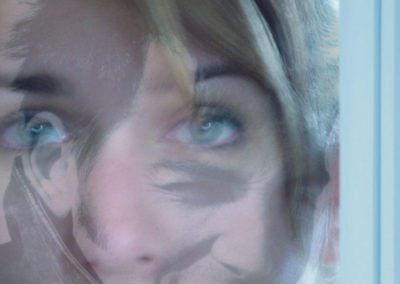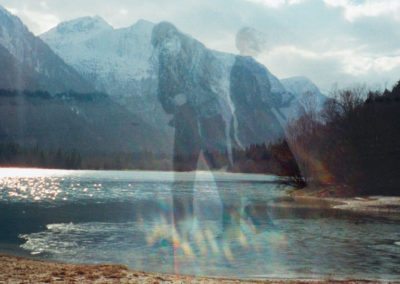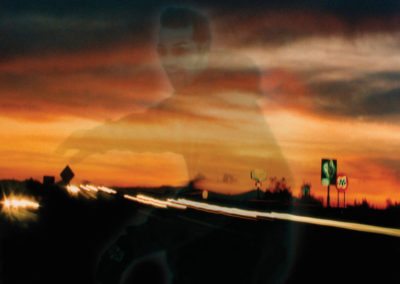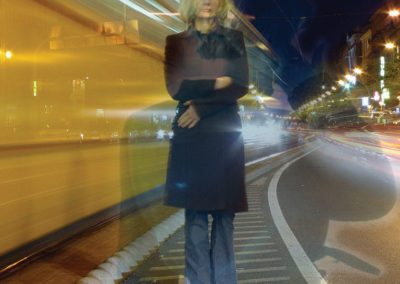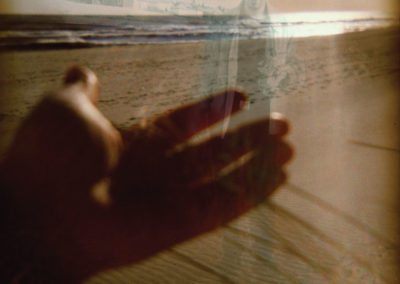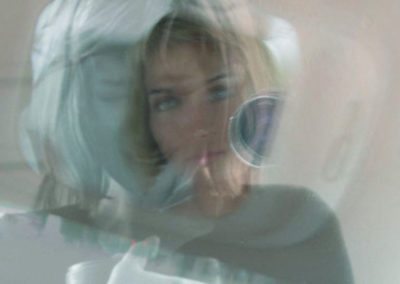Commerce without Commerce
“To learn to live. […] To live, by definition, is not something one learns. Not from oneself, it is not learned from life, taught by life. Only from the other and by death. In any case from the other at the edge of life. […] If it – learning to live – remains to be done, it can happen only between life and death. Neither in life nor in death alone. What happens between two, and between all the ‘two’s’ one likes, such as between life and death, can only maintain itself with some ghost. So it would be necessary to learn spirits. […] to learn to live with ghosts, in the upkeep, the conversation, the company, or the companionship, in the commerce without commerce of ghosts. […] And this being-with specters would also be, not only but also, a politics of memory, of inheritance, and of generations”– writes Jacques Derrida in his book Specters of Marx: The State of the Debt, the Work of Mourning, & the New International. Though he speaks of historical memory and historical heritage, his metaphor is valid for the dimensions of personal life as well.
Luca Gőbölyös’s photos are about commerce without commerce with Benő, the now phantom, ghost, or specter half of the Lucabenő symbiosis. She had to learn life through the death of Benő. Her photos, which show the different stages of learning to live together, are populated by ghosts; Benő’s sometimes angelic, sometimes demonic ghost images, as well as the changes and reflections of her own face, in the accidental light of death and on the edge of life. This relationship is far from static, and is just as dynamic and changing as the real, worldly one.
The tormenting stages of mourning are no more bearable than the pain of the dying. The loss, as a parasite surrounding the mortal remains, seems to be preparing to stay for eternity. The living, with the crippling weight of this invisible receptacle, balance between the “inner and outer edge” of life, in this nauseating province to where even the dead have access, though only in the form of ghosts. While the livings learn life through death, fighting with their own ghost, who yearns to drag the part of their life that was left behind with them into that other world. Grief is just as tiring as working to make a living, and in the same way as giving life is accompanied with pain, loss is just as painful. This lonely, personal grief now demands a place in public space in order to evoke others’ grief.
Art is not only a tool for healing and therapy, but also a medium of communication and dialogue, and in this way the haunting spirit of material existence. Personal memory and collective memory are only separated by a thin membrane, and can easily be interchanged, with only the haunting spirits being different.
The genre of ghost photographing isn’t much younger than photographing itself. Lying behind its immense popularity are the horrors of war, yearning to heal, and of course the belief that the photo can be a tool for finding the truth. The latter is what caused ghost photos to fall into the same category as scientific photos, be it astronomical or microscopic ones. Still, the strongest incentive in the 19th century was that in the godless, post-enlightenment dual world, people didn’t want to believe in the ability of ghost photos to authentically capture reality, but doubt was always lurking in the background. The other kind of immensely popular genre, that of postmortem photos taken before the moment of final separation, also aids remembrance. In this sense, ghost photos provided an opportunity for contacting the dead, and for dealing with the loss through the use of visual support.
Freud, in his work Totem and Taboo, written at the beginning of the century, argues that ghosts and demons are nothing more than projections of the bereaved, in other words, projections of their own emotional impulses. In this way, ghost photos are projections of the survivors, representing their need for populating the world with ghosts and maintaining a relationship with them after their sudden and crippling loss. This relationship is just as ambivalent and dual in nature as the one with living people; it builds on love and hate, identification and repulsion, remembering and forgetting, in the same way as we can see on Luca Gőbölyös’s ghost photos. Sometimes Luca and Benő’s faces melt together into Lucabenő, in other places Luca’s face is divided into one from the present and one from the past, while in other photos they float above the surface of a lake in the Alps, with their backs turned against each other. Then, as if the nightmares and shadows of the darkness came to life in apocalyptic visions of death, or as an embodiment of Freud’s death drive, Death gallops across the night landscape in the form of a motorcycle rider. Elsewhere, the torments of the mind are projected and mixed into the threatening shadows of the night. Luca had to get to know her own ghosts, and learn to live together with them. And the moment of absolution and letting go arrives, where earth and water come together, and where, for a moment, we see the mirage of the heavenly city. Perhaps this is nothing more than wanting to believe, a projection, healing, and the victory of the other instinct: that of survival.
According to Roland Barthes, every photographic exposure is an experience of a micro version of death. The opposite is also true, as photographs can become a tool for bringing the dead back to life, in the way that Derrida brought together the two seemingly irreconcilable intellectual tendencies of the 19th century: the emerging spiritualism and the historical materialism that answered it.
Edit András
Revised, shortened version.
Published: Új Művészet, 2005/8, 24–25.

